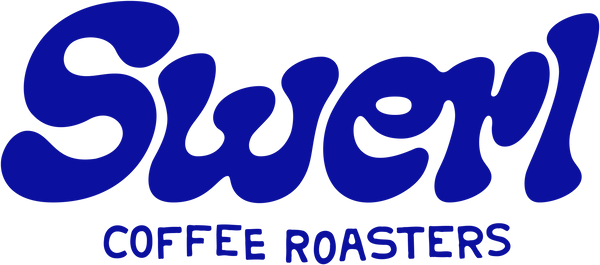The first roaster out in October is Manhattan Coffee Roasters from Rotterdam in the Netherlands. Founded in 2017 by the coffee professionals and coffee champions Ben Morrow and Esther Maasdam that presented a brilliant line up of coffees and super friendly vibes. Manhattan Coffee Roasters is definitely a roaster whom you’d not only like to drink their coffee but also hang out with them!
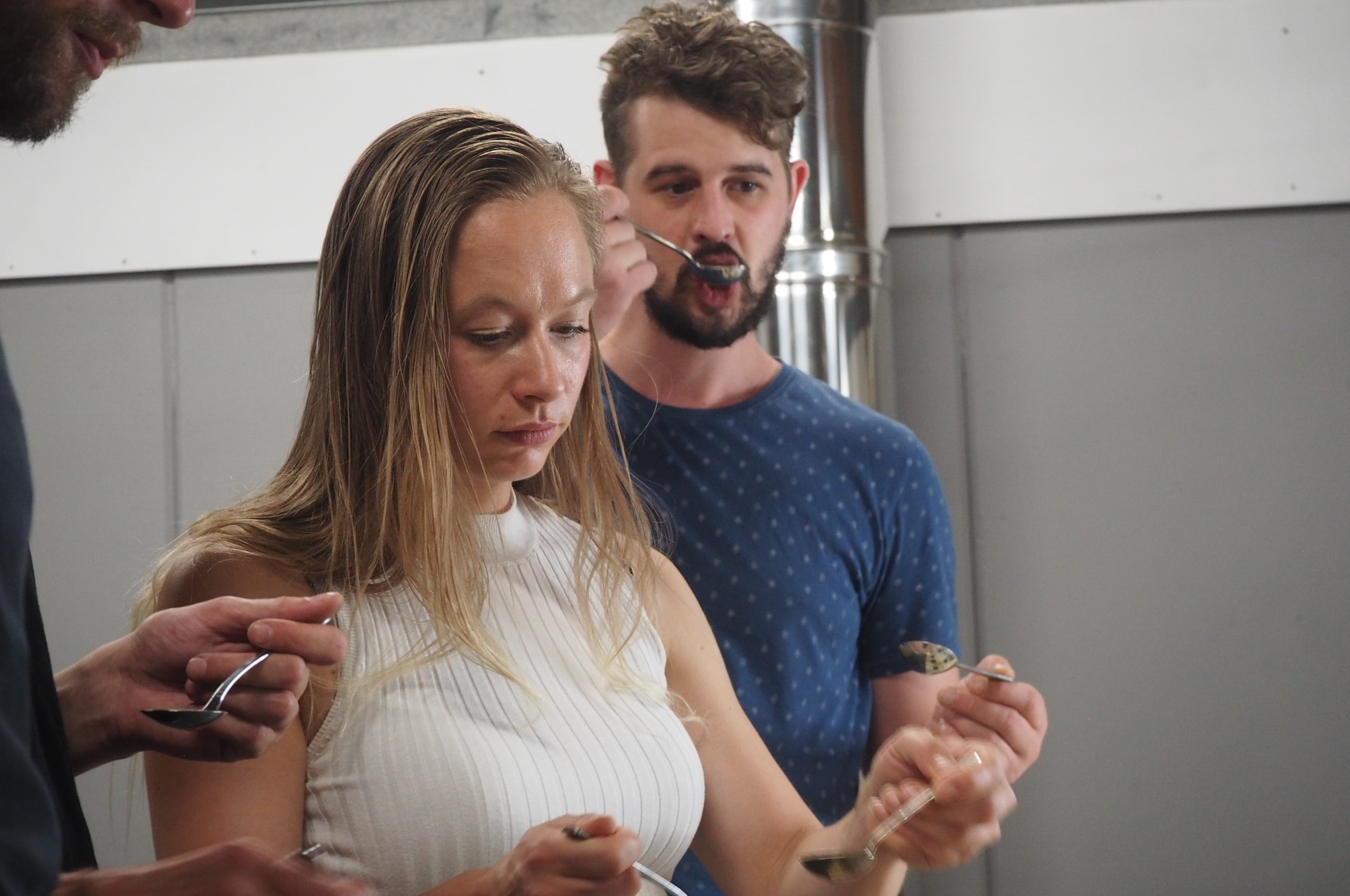
Luckily for us we had the chance to get an interview with Esther and get an insight into their roastery.
----
How did you guys meet each other? Was it coffee at first sight? ;)
- I was representing The Netherlands in the World Latte Art Championships in 2014in Melbourne. The first night I was in Melbourne I went to a latte art smackdown that was held as a side event. I walked up to a familiar friend who was in conversation with Ben and that kickstarted several nights of very competitive behavior between us, by the end we both found beating each other more important than winning the prize money. It was pretty special and on the show itself Ben and I were walking around around the show floor, whereas normally I’d be backstage with my headphones on right before a competition like that. I didn’t win, but I did find a note with Ben’s phone number on my prep table later with an invite to an Australian Football match. So it felt like I had won. I was in town for another 2 weeks and we saw each other almost every night until Ben asked me to be his girlfriend right before I had to go back to Europe. It was 2,5 years of a long distance relationship before Ben moved over to The Netherlands to live here permanently.
You both have a very interesting background in coffee and competition. How did it all start for you in coffee and why/how did you start competing? Was that a natural step to take?
- For both of us it started out as a side job whilst studying. Ben started working in a cafe in Melbourne and I started making coffee at festivals around The Netherlands. Ben was doing a lot of latte art in the cafe and it grew his Instagram a lot because of it and it was gaining popularity, it all happened organically and competing just made sense. I started competing because I was managing a team of baristas and one of them wanted to compete, so we decided to train together.
From what we read you really went head in for competition despite having to take some tough decisions (we are sure you both did), can you tell us a bit more about that crazy experience?
- It's funny, people see you competing at a certain level and think that you're just talented or have a natural skill for it. But it is honestly something you decide to put your mind to, put your time in and put other things aside. It’s a lot of hours and sacrifice. Moving from place to place because you can't afford the rent or your electric bill because you decided to spend all your money building a competition setup in your house is probably not for everyone. But if you want something, you have to work for it and there is always a price.
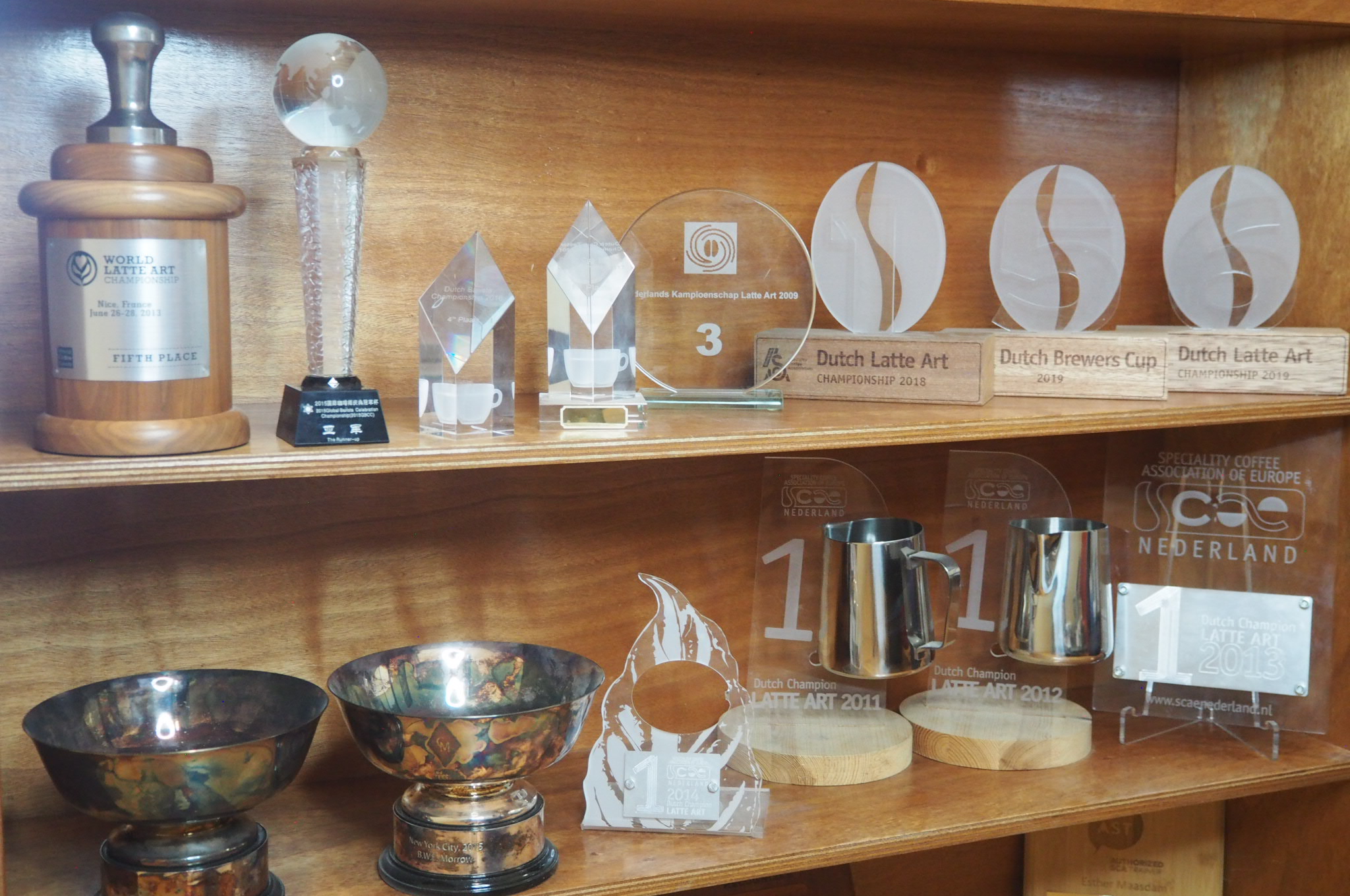
What were the most important lessons you have learned from your experience competing/ working in coffee that were vital when starting Manhattan Coffee Roasters?
- Experience, knowledge and relationships are key. We both have worked our butts off to make a career path in this industry and without it we wouldn't have been able to do this. Even though it's a global industry, it's a small community. So we work with honesty, integrity and kindness. It's better to grow slowly but in the right direction with the right people otherwise you might not end up with the business you had envisioned.
Have both of you had the dream of starting a roastery together from the beginning or was it something that somehow evolved? How did that idea come about?
- It kind of evolved and just made a lot of sense! I was already running a coffee on events business and was buying a lot of coffee for that, so roasting our own made sense in that regard. We’ve both worked in coffee for a long time, we have over 3 years combined experience in the industry so it was also time to take the next step inour careers. Especially as Ben had just moved over to Europe, we wanted to really settle and we both felt starting a roastery together was the way to go. We’ve never looked back!

How did you come forward to the name Manhattan Coffee Roasters?
- When Ben had just moved to Rotterdam we where having some cheese and beer at a food court in a harbour area next to the river the Maas, right across the Cruise Terminal and the famous Hotel New York. Ben asked me why it was called that and I explained about the connection of the 2 harbours, Rotterdam and Manhattan, by the Holland-America cruise line. I explained that Rotterdam also carries the nickname "Manhattan Aan de Maas" (Manhattan at the Maas) because of it's modern skyline and bridges over the Maas river connecting North and South Rotterdam. He then called out we should name the business Manhattan Coffee Roasters! So it's a wink to where we are based, the logo is the Erasmus bridge that we in Rotterdam call; De Zwaan (The Swan) all the while it also alludes to our international character and ambitions.
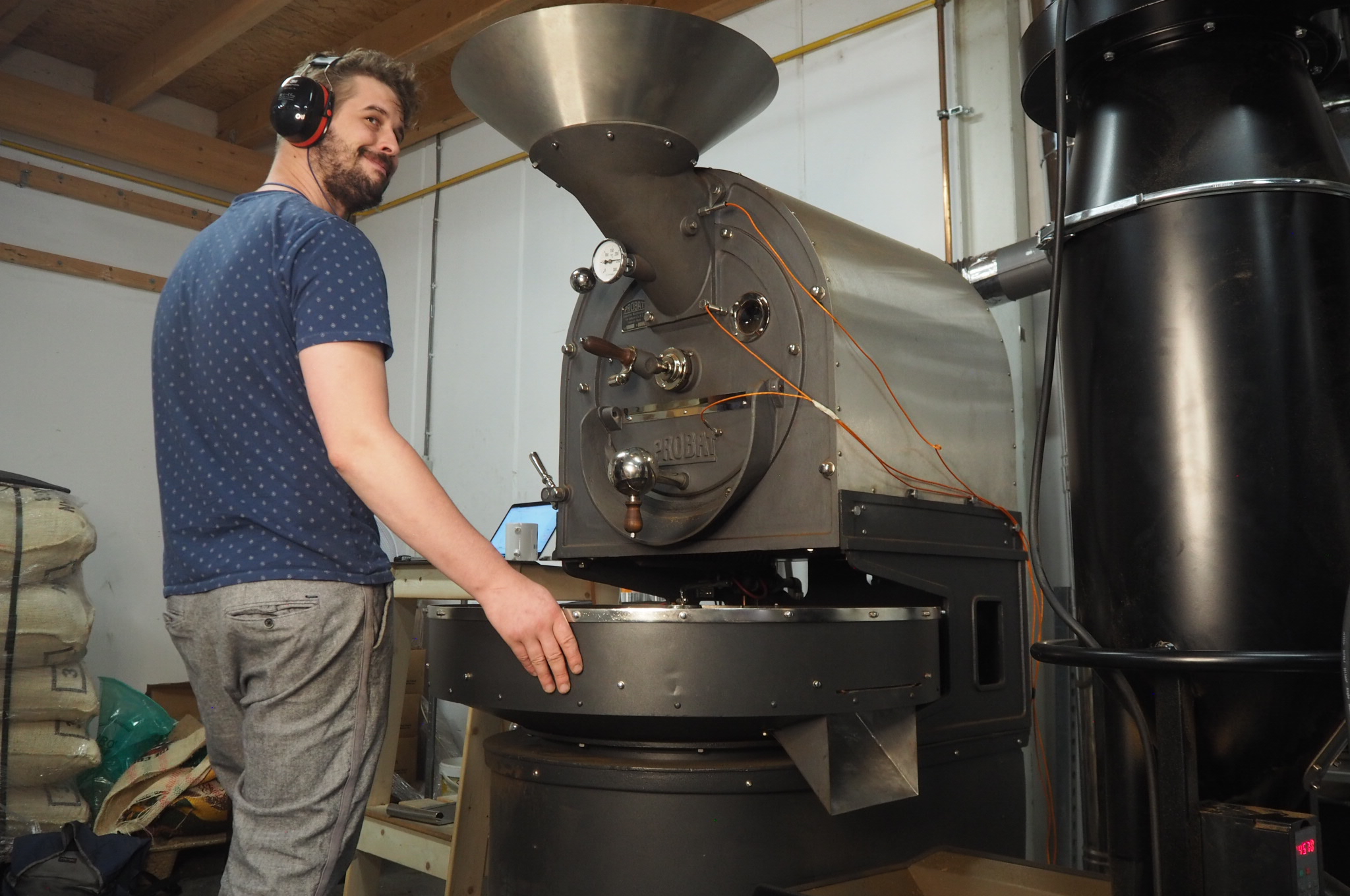
From the time you had the idea of starting your own roastery until you were up running, how long did that take and what were some of the challenges you went through?
- The first year we roasted in the restaurant Aloha, based in an old tropical swimming pool here in Rotterdam. It was a great opportunity to get a better understanding of roasting, sourcing etc.. while slowly building up our brand. It was not the easiest location as there was no loading bay so the green coffee bags needed to be carried in via little stairs. A year later we got our own space and bought our own Probat LG12! Probably one of the hardest things about starting your own fully self-funded roastery is cashflow and especially if, like us, you like buying expensive coffees ;)
We must say we are truly impressed by all the coffees we tried from you! Do you remember the first coffees you purchased? How do you choose your coffees?
- We basically buy coffees we think are awesome! Some of the first coffees we bought were Panamanian geishas from the Hartmann family and Willem Boot. When we purchase coffee we look at a price-quality-balance and we find it important that if you pay for a certain cup quality, expectations are met. We buy what we love to drink ourselves and coffees that excite us. We love special project coffees, limited releases and unique products. It makes for quite a fast paced and diverse offering, but it's what get’s us out of bed in the morning!
Anything you can tell us about the two coffees Mama Mina and Sweet Valley that we fell in love with?
- Sweet Valley is a coffee we’ve had on our list for a while now and we fell in love with it quite quickly ourselves. The name truly does it justice and is just such a sweet coffee. Who doesn't like a naturally sweet coffee? Cafe Granja La Esperanza is already well known for the outstanding work they do and we love a lot of the coffees they produce. We cupped a lot of their coffees but we knew pretty quickly that Sweet Valley was something that everyone can love, it’s super-sweet, has a lot of juicy red-fruit and it’s definitely one of our most popular coffees.
Mama Mina we've been super excited about for a long time, the lot is named after the grandmother of Erwin Mierisch. We started working with The Mierisch Family with their farms in Honduras and then quickly got onto their coffees in Nicaragua as well! Mama Mina was 1 of the first 2 Nicaraguan coffees we ever offered and we couldn't have been more happy. It was also the first time we launched the variety Ethiosar, which is a hybrid's hybrid.
It’s a cross between a Sudan Rume with Sarchimore (which is itself a cross between a Timor and Villa Sarchi). The offspring is then crossed again with Villa Sarchi (a dwarf mutation of Bourbon from Costa Rica). It’s complex genetic diversity gives the variety strong resistance to coffee leaf rust, high production yields (compared to Caturra for example) and a vibrant cup profile.
How do you brew the coffees we picked on espresso?
- We recommend to brew the espresso on a 1:2 – 1:2.5 ratio. With water around 80-100 pp and 92-94 degrees Celsius. Generally we prefer our coffee with a tds of 8.8 – 10 but feel free to adjust accordingly if you prefer higher or lower strength. We recommend trying to go for high extraction with all our coffees.
Thank you for taking the time for us! Is there anything else you’d like to say to the people drinking your coffee?
- There is no wrong way to enjoy your coffee and your skills are always good enough!
----
Something that struck us about the coffee selection presented by Manhattan Coffee Roasters, was that there is always something unusual in each coffee, either a process, variety or farm, this made extra exciting to choose the coffees that would be sent out in the coffee-box this month.
With no further ado, the coffees chosen from Manhattan Coffee Roasters were the following *drumroll*
MAMA MINA, NICARAGUA
Country: Nicaragua
Region: Matagalpa
Producer: Fincas Mierisch
Process: Washed
Altitude: 1400 masl
Variety: Ethiosar

Mama Mina is named after the great grandmother of Erwin Jr (Manhattan’s contact point for Mierisch) Mina McEwan. The farm was purchased in 2012 and was initially called La Minita, however that name was already taken by another very famous Costa Rican coffee farm, so the family decided to rename it to Mama Mina. The farm is located inside the Arenal Nature Reserve in the Matagalpa department. Due to it's very unique micro-climate the farm experiences fog for over 60% of the day which means the farm “auto-shades” The farm then does not require many shade trees and the fog also creates cooler temperatures which leads to slower maturation of the cherries.
Ethiosar itself is a hybrid’s hybrid. It’s a cross between a Sudan Rume with Sarchimore (which is itself a cross between a Timor and Villa Sarchi). This offspring is then crossed again with Villa Sarchi (a dwarf mutation of Bourbon from Costa Rica). This complex genetic diversity gives the variety strong resistance to coffee leaf rust, high production yields (compared to Caturra for example) and a vibrant cup profile.
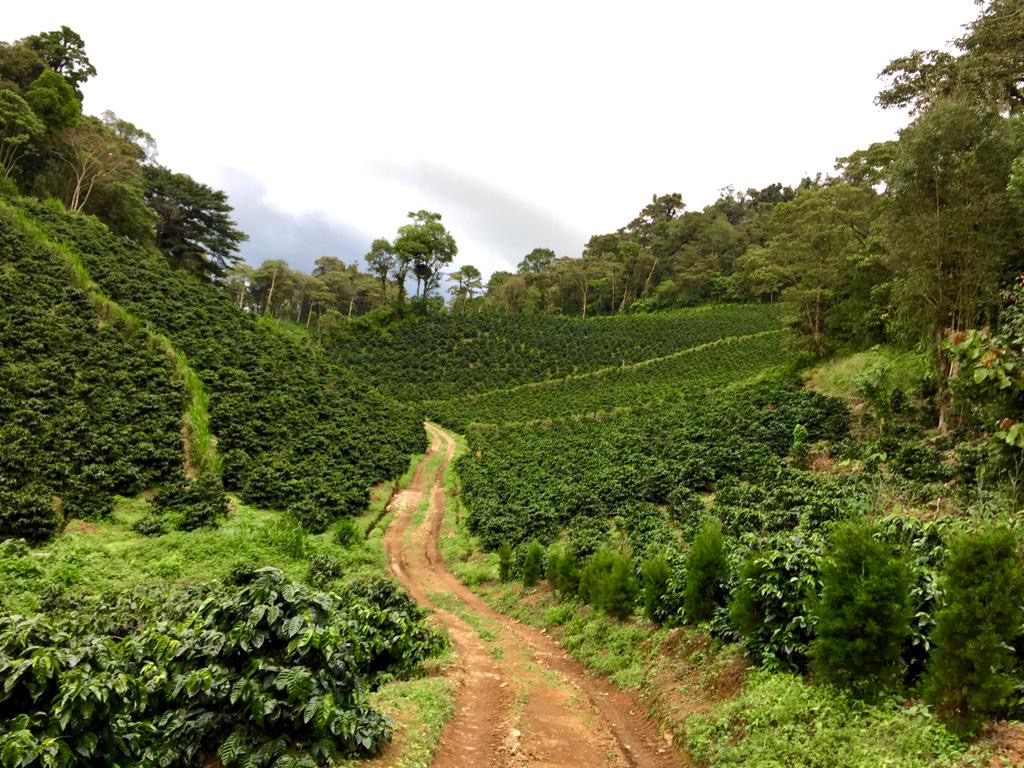
Ethiosar lots from Fincas Mierisch are always exceptional on the cupping table and a recent lot from their Los Placeres farm scored 90.3 points at the Los Favoritos private collection auction. Our specially commissioned lot of Erwins Ethiosar may be just as good and we were shocked with how clean and vibrant this coffee is. It's sparkling, lively and a great example of what washed coffee 'should' be.
SWEET VALLEY, COLOMBIA
Country: Colombia
Region: Valle del Cauca
Producer: Finca Potosi, Cafe Granja la Esparenza
Process: Natural
Altitude: 1800 masl
Variety: Colombia
Beginning in 1930, Israel Correa and Carmen Rosa Vega arrived in Valle del Cauca seeking unoccupied land to start a farm, acquiring Potosi. Over the upcoming years, there weren’t major changes in their way of life, besides of raising a big family which was the Colombian tradition in those days. Following this and the lack of labor, the children had to help by doing farm work. In 1945, three different varieties were introduced to the existing Typica; Yellow Bourbon, Red Bourbon and Caturra.

Two of the eleven children, Rigoberto and Luis, showed special interest in coffee production and processing. They decided to give their crop a new direction, changing to organic in the late 90’s. Besides Potosí, another farm in the Trujillo region was acquired to enlarge the organic production, La Esperanza farm. In 2007 Don Rigoberto had the chance to lease and manage a coffee farm in the region of Boquette in Panama, called “La Carleida”, and a year later obtained first place in the “Best coffee of Panama”. At this point he decided to bring some of the Geisha seeds to Colombia, starting a new era in the history of Granja La Esperanza.

Five farms now make up the Café Granja La Esperanza: Cerro Azul, Las Margaritas, La Esperanza, Potosi and Hawaii. With a reputation for producing competition winning coffees, processes are matched with varieties to produce unique flavour profiles.
With 188,725 trees over 52 hectares, Potosi is split into 10 lots and grows Sidra, Mandela, San Juan, Castillo and Colombia. Sweet Valley is produced just for us, combining beans from Potosi and close surrounds to create a natural Colombia landing at a time when fresh crop fruity coffees are harder to come by.
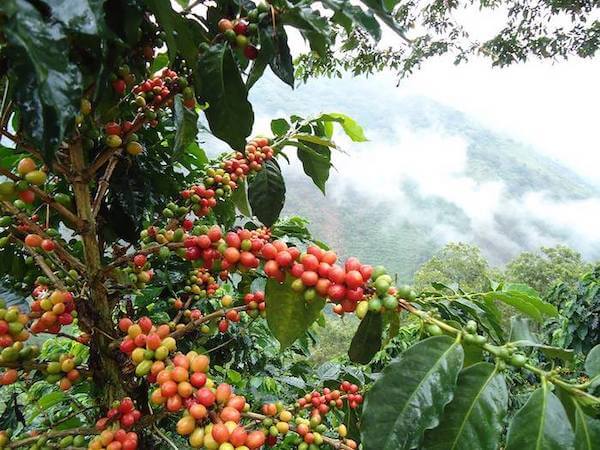
Cherry is fermented for 15 hours at a controlled temperature before being moved to a dehumidifier for another 72 hours until fully dried. It is then dehulled and bagged for export.
The Colombia coffee varietal is a hybrid of Caturra and the infamous Hybrido de Timor, a hugely influential cross between Arabica and Robusta that brings a lot of disease resistant traits to Arabica. By crossing with Caturra, members of Cenicafe, the Colombian National Coffee Research Centre were able to offer rust resistance and improved flavour profiles for coffee farmers in the mid 80’s. Colombia can prove fairly unstable as a cultivar though and has seen a lot of replacement with Castillo in more recent years.
Now that you've gotten the chance to get acquainted with Manhattan Coffee Roasters and hopefully even brewed their beautiful coffee, onto the second featured roaster of October, none other than MOK from Brussels.
